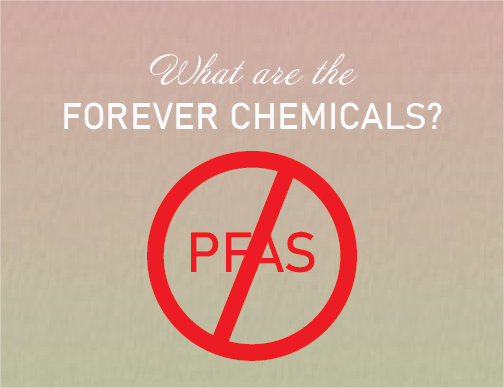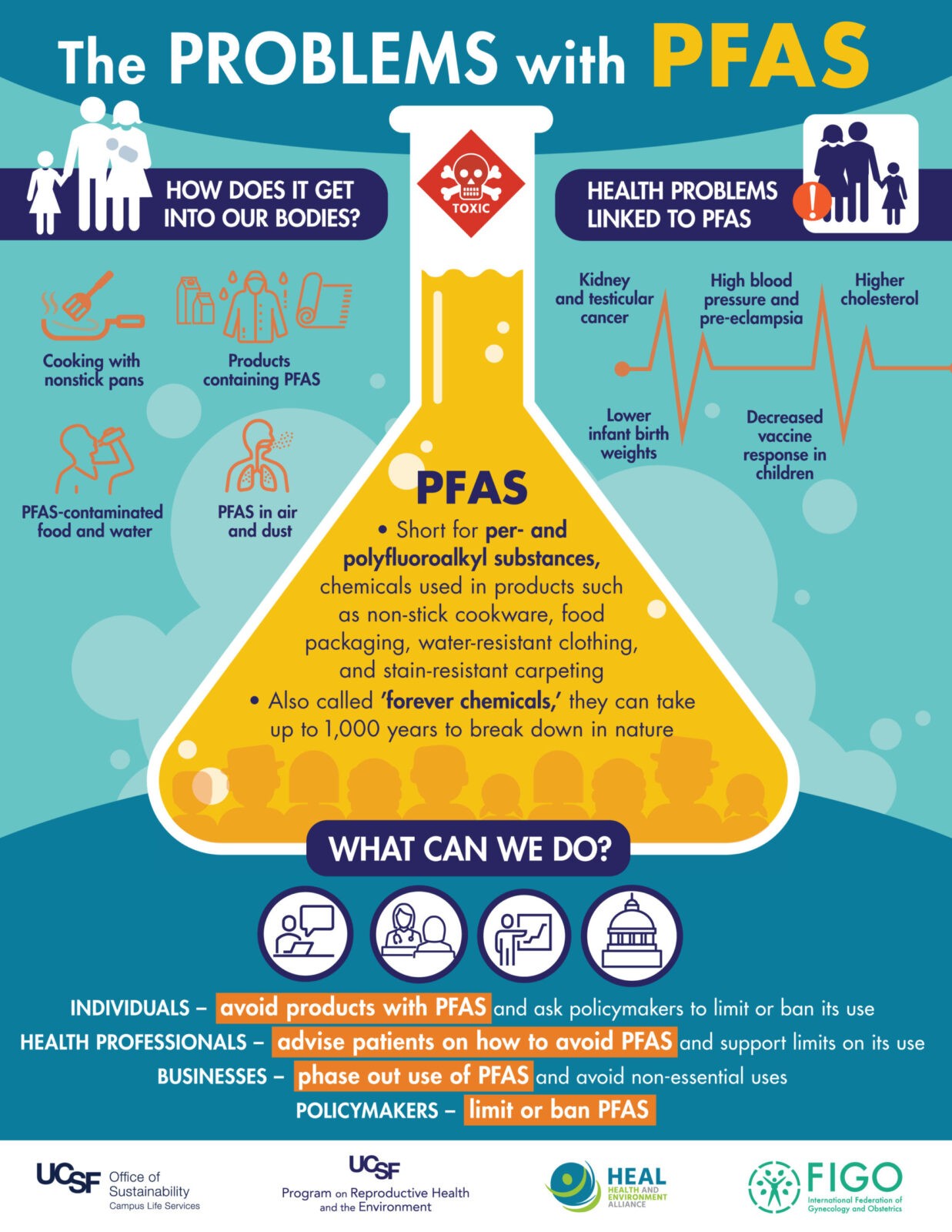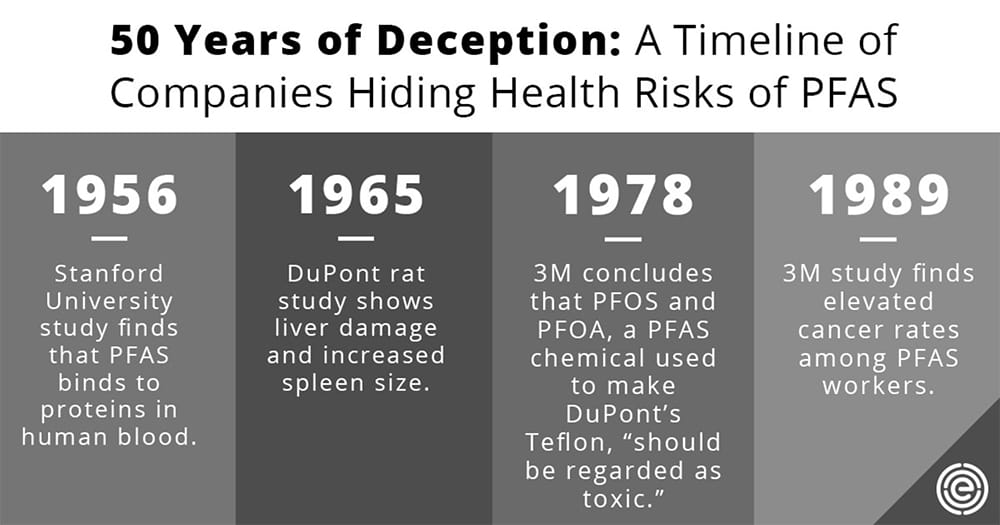As part of the Know Your Ingredients initiative, this post is written to highlight fashion industry regulations and apparel product knowledge. At &HER, we monitor fiber and chemical innovation, review policy and new regulations because it is our goal to offer you the most well designed garment for your body and our planet.
We welcome your engagement to inquire, suggest, and critique our product. Please email hello@andher.us. Conversation is where improvement starts.
Recently, the Biden administration and the EPA are taking steps toward removing and regulating the use of PFAS. These initiatives are prompting apparel companies to make changes to their product offerings, so let's explore why and how PFAS are impacting us and our environment.
WHAT IS PFAS?
PFAS is short for Perfluoroalkyl and polyfluoroalkyl compounds (I know, it is a mouthful), which is a class of 4,000+ man-made chemicals that are often used in products that resist heat, oil stains, grease, and water.
WHAT ARE THE FOREVER CHEMICALS?
PFAS are often called “forever chemicals” because they don’t break down in the environment or in your body. These toxic chemicals can move through soils and contaminate drinking water sources. Because they are so prevalent, these chemicals can be found in the blood and urine of many humans and animals globally. Exposure to the chemicals has been linked to certain cancers, weakened immunity, thyroid disease, and other health effects.
WHY ARE YOU TELLING ME THIS?
PFAS are found in our food, water, and air because this chemical is widely used on everyday products, including our clothes. For years, apparel brands have been using stain and moisture-resistant chemicals on outdoor and activewear garments (There are many product examples, but in the realm of next-to-skin garments, think sports bras, yoga pants, and period underwear). A few major brands have initiated plans to reduce the use of PFAS on garments by 2024, but is that enough?
PFAS can be released at three different phases of their lifecycles: manufacturing, use, and disposal.
Textile Manufacturing: The manufacturing of certain high-performance textiles uses many chemical treatment steps that involve PFAS to protect the textiles against water, stain, and oil penetration. Presence of PFAS particles can be found in and around the manufacturing facility.
Textile use: During their lifetime, PFAS can be released from clothing through a number of mechanisms including breakdown of ploymers during wearing and laundering.
Textile disposal: In the United States, most textiles (e.g., carpet and clothing) are disposed in landfills at the end of their useful lives. Study shows up to 70 PFAS compounds were found in contaminated water that infiltrates through the waste mass in landfills
WHAT THE EXPERTS ARE SAYING?
PFAS is dangerous for three crucial reasons, says Erik D. Olson, NRDC’s senior strategic director of health and food. “First, the structure of PFAS means they resist breakdown in the environment and in our bodies. Second, PFAS move relatively quickly through the environment, making their contamination hard to contain. Third, for some PFAS, even extremely low levels of exposure can negatively impact our health.”
Yes, the US government and the CDC is curbing the use PFAS, but more "stringent regulations" is needed for these "forever chemicals," stated Philippe Grandjean, an adjunct professor of environmental health at Harvard T.H. Chan School of Public Health. " I’m willing to accept that some PFAS compounds may pose fewer human health risks. But I would like to see the proof of their safety before they’re allowed to be used in products, rather than finding out 10 to 15 years down the road that these compounds don’t break down in the body, that they accumulate, and that women pass them down to their children via the placenta or through breastfeeding.
We should not do this experiment again on humanity. Industry has hidden the dangers of PFAS from us for decades. They knew about PFAS toxicity since the 1970s but didn’t share the information with the EPA until 2000. We should not allow similar secrecy to happen again."
WHAT CAN I DO?
Here are a few tips to reduce PFAS in your life.
-
Be mindful of your purchases: In general, avoid buying items that are "waterproof," "water-resistant", or "stain-resistant" unless absolutely necessary. Don't use nonstick cookware, Gore-Tex clothing, personal care products with "PTFE" or "fluoro" ingredients, or textiles with stain-resistant treatments, like Scotchgard.
-
Demand transparency in manufacturing: Ask manufacturers whether their products contain PFAS, since they likely won't be listed on labels. (Beware: many products that say "PFOA Free" aren't free of other types of PFAS.)
-
Cut down on fast food. Many fast food and carryout containers contain some PFAS. About 20 of the chemicals are allowed in wrappers that keep food grease from leaking through packaging, but you might be surprised just how little is known about those 20 types of PFAS.
-
Be mindful when disposing your used clothing. Sadly the infrastructure for recycle and upcycle waste textile is very limited. Donate or resale used clothing if you can. However, many clothing donations still end up in landfills. Cellulosic materials like cotton, linen, hemp take less than 6 months to biodegrade, but synthetic materials like nylon and polyester will take from 20 to 100+ years. (&HER will be initiating a take back program soon, we will properly recycle or upcycle used cotton based under garments).



